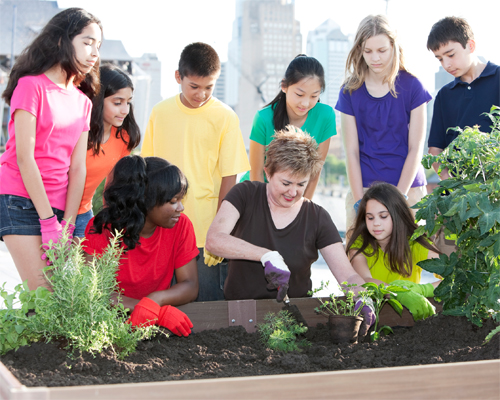Introduction
A teaching garden offers a unique, interactive way to learn about plants, ecology, and sustainability. It serves as a living classroom where students and community members gain firsthand experience in gardening, biology, and environmental stewardship. Beyond just growing plants, teaching gardens foster curiosity, responsibility, and a deeper appreciation for nature. This article explores the vital role of teaching gardens, how to create one, and the educational benefits they provide.
What Is a Teaching Garden?
A teaching garden is an educational space designed to support experiential learning about horticulture, agriculture, and environmental science. These gardens are typically found in schools, community centers, and public parks. They include a variety of plant species—vegetables, herbs, flowers, and native plants—selected to align with curriculum goals or community interests.
Key Features of Teaching Gardens
- Hands-on learning: Encourages active participation through planting, nurturing, and harvesting.
- Curriculum integration: Supports science, math, nutrition, and environmental studies.
- Community involvement: Engages students, teachers, and local residents.
- Sustainability focus: Teaches eco-friendly gardening practices.
Educational Benefits of Teaching Gardens
Teaching gardens offer measurable benefits across multiple domains:
- Enhancing Science Education: Students observe plant life cycles, soil biology, and ecosystems in real time, improving comprehension of biological concepts.
- Promoting Healthy Eating: Growing fruits and vegetables encourages better nutrition awareness and dietary habits.
- Building Social Skills: Collaborative gardening fosters teamwork, communication, and responsibility.
- Supporting Mental Health: Studies show exposure to green spaces and gardening can reduce stress and improve mood.
According to the National Gardening Association, 75% of youth participants in garden programs reported eating more fruits and vegetables.
How to Create an Effective Teaching Garden
Planning and Design
- Assess space and resources: Consider sunlight, soil quality, water access, and available tools.
- Set educational goals: Align plant choices and activities with learning objectives.
- Involve stakeholders: Engage educators, students, and community members in planning.
Plant Selection
- Prioritize native and easy-to-grow species for sustainability and success.
- Include a mix of vegetables, herbs, and pollinator-friendly flowers.
- Rotate crops annually to maintain soil health.
Maintenance and Curriculum Integration
- Schedule regular garden activities like planting, weeding, and harvesting.
- Integrate lessons on photosynthesis, nutrition, and environmental impact.
- Use the garden for cross-disciplinary learning—math through measuring growth, art through botanical drawing.
Real-World Examples of Successful Teaching Gardens
- The Edible Schoolyard Project (USA): Founded by chef Alice Waters, it uses organic gardening to teach children food literacy.
- Grow to Learn NYC: Supports over 500 school gardens, improving student engagement and nutrition education.
- The RHS School Gardening Program (UK): Offers resources and awards to inspire gardening in schools.
These case studies highlight how teaching gardens can transform education and community health.
Tips for Maximizing Teaching Garden Impact
- Start small: Begin with container gardens or raised beds to manage resources.
- Incorporate technology: Use apps and sensors to monitor plant health and engage digital learners.
- Celebrate milestones: Host harvest festivals or garden tours to motivate participants.
- Offer training: Provide workshops for teachers and volunteers to build gardening expertise.
Conclusion
Teaching gardens are powerful tools that nurture knowledge, health, and community connection. By combining hands-on gardening with educational goals, they inspire learners of all ages to appreciate and care for the natural world. Whether you are an educator, parent, or community leader, creating a teaching garden can spark curiosity, improve well-being, and cultivate lifelong skills. Take the first step today—plant the seed for growth, learning, and sustainability.
